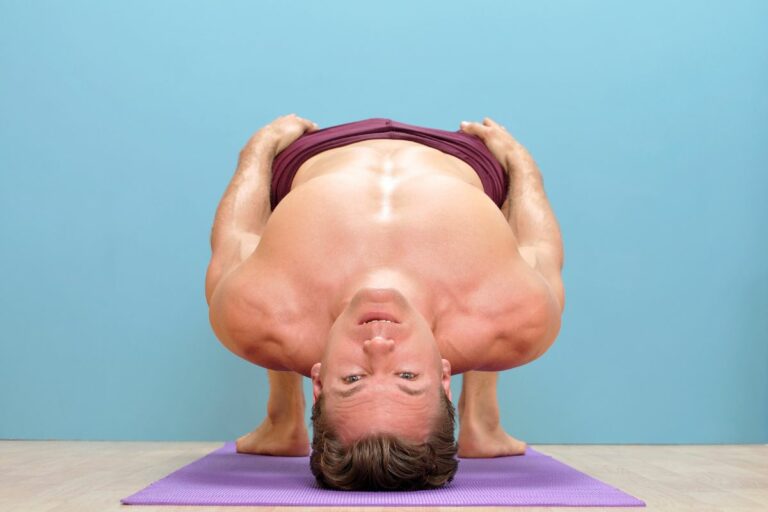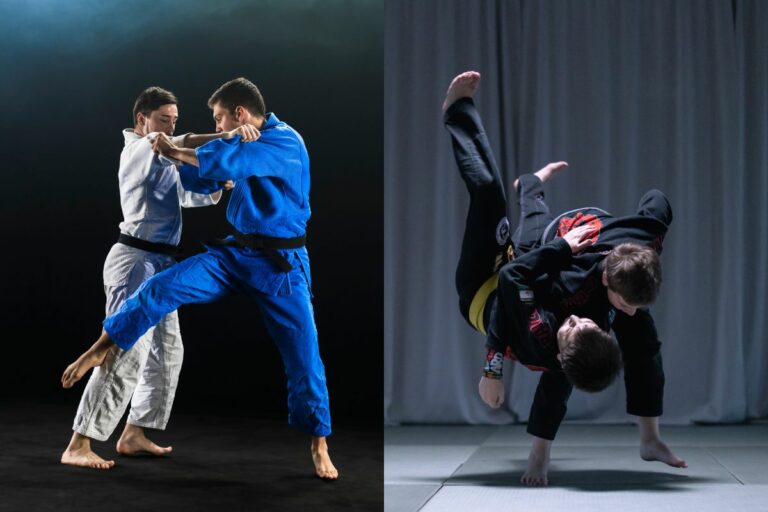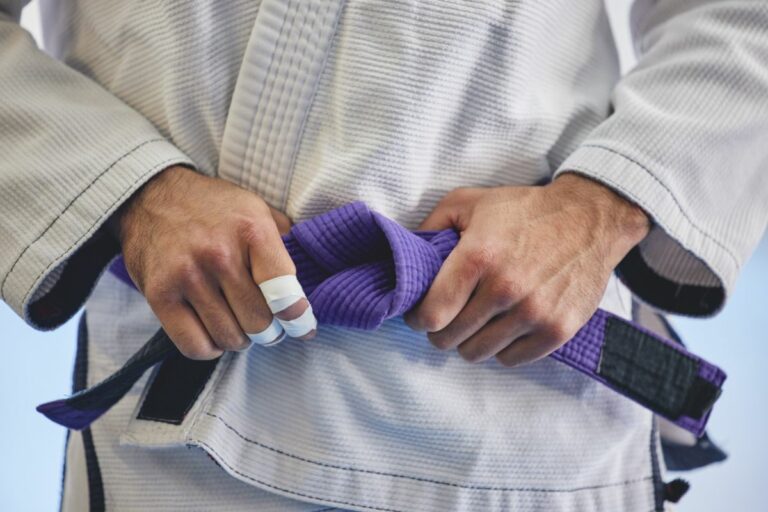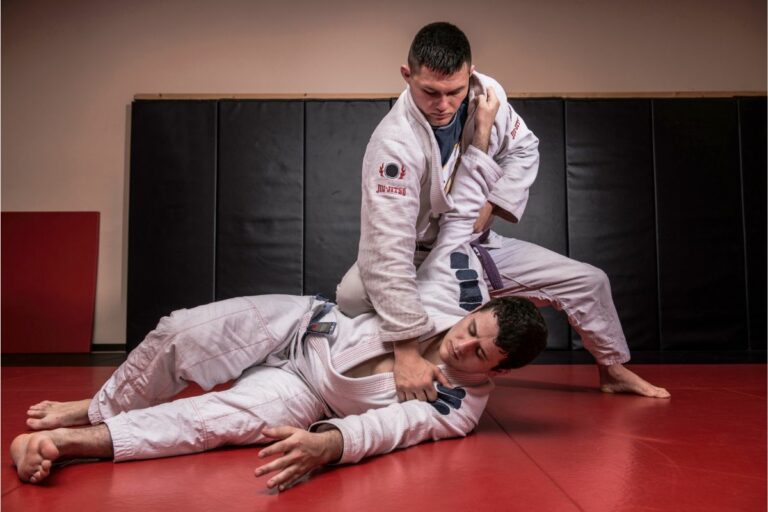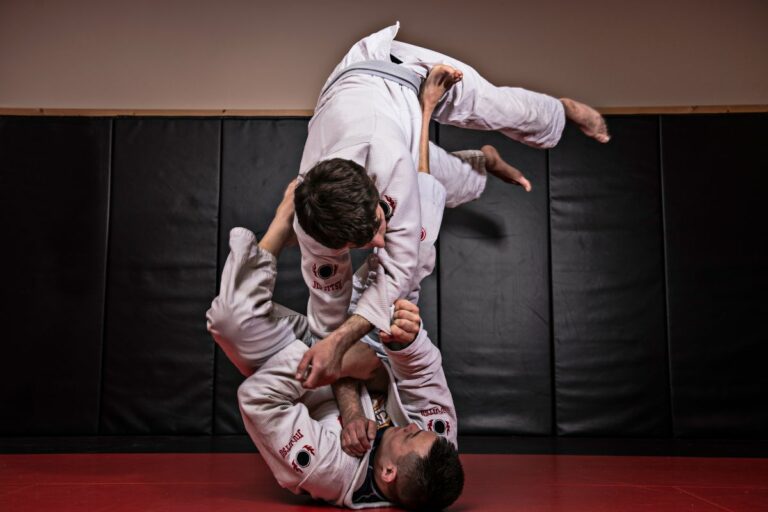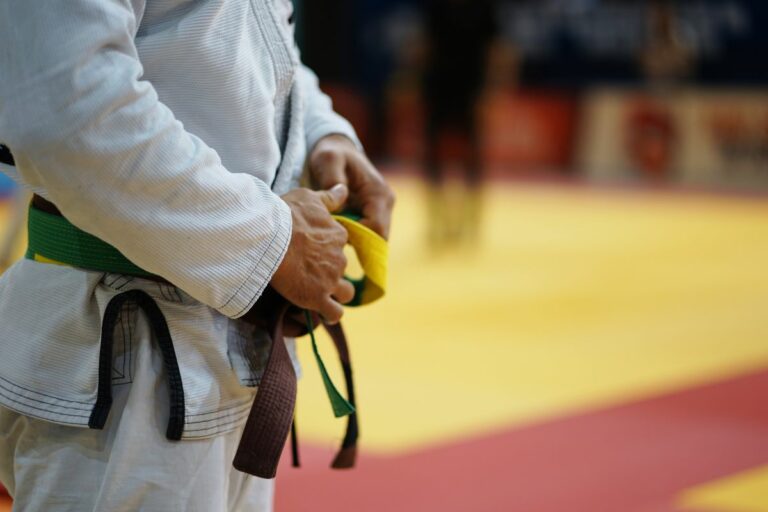BJJ Vs. Karate: Which Is Better?
BJJ (Brazilian Jiu-Jitsu) is a martial art that combines grappling techniques with striking moves. Karate, on the other hand, focuses primarily on kicking and punching, rather than grapples and holds.
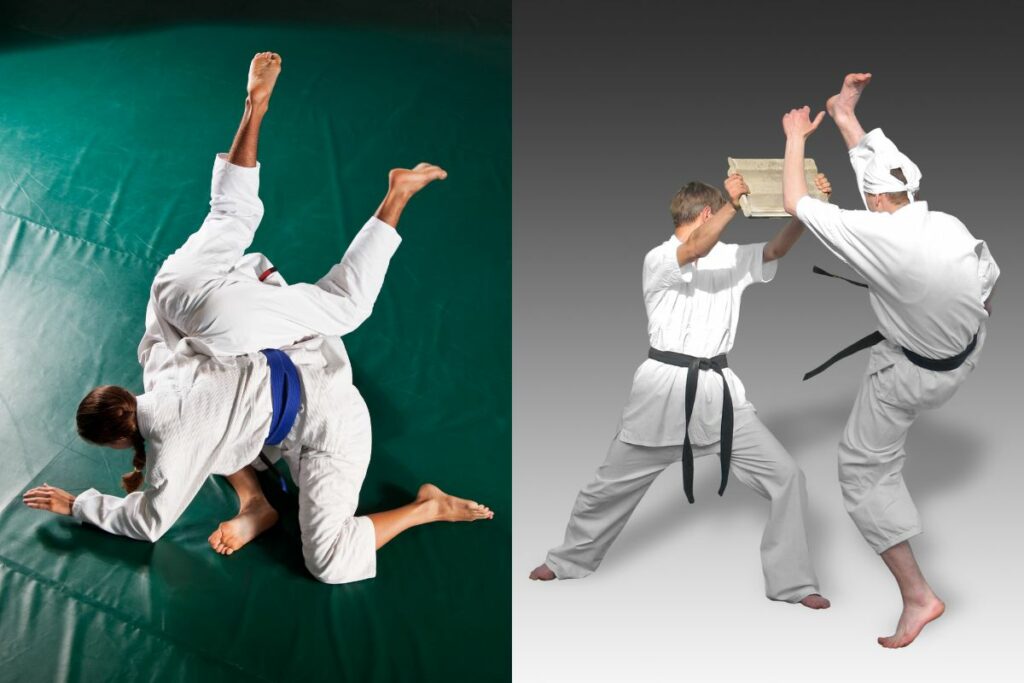
Both are extremely popular forms of martial arts, with an enormous worldwide following; but which one is better? To determine the results, we put Brazilian
Jiu-Jitsu head to head with karate in the ultimate fight for martial arts glory; read on to discover which reigns supreme!
What Is Brazilian Jiu-Jitsu?
Brazilian jiu-jitsu (or simply “jiu-jitsu”) is a martial art developed by Gracie family members in Brazil during the early 20th century and has expanded to become a worldwide practice.
BJJ started its life in the 1920s, with a famous practitioner of Judo, Matsuo Maeda. Maeda was inspired by his time spent training under Japanese judoka Mitsuyo Maeda, who had been studying art since he was 12 years old.
After spending some time in Japan, Maeda returned to Brazil where he began teaching what would eventually be called Brazilian jiu-jitsu.
The first recorded use of the term “Brazilian” comes from a newspaper article published in Rio de Janeiro in 1922 when it referred to the new style as being practiced in Brazil.
From here, Brazilian Jiu-Jitsu spread across the globe, increasing in popularity as it gathered momentum, and formed one of the most popular martial arts that we see today.
What Are The Principles of Brazilian Jiu-Jitsu?
The principles of Brazilian jiu-jitsu are based around three main concepts: leverage, control, and submission.
These principles are used throughout all aspects of the art, including ground fighting, throws, locks, chokes, sweeps, and more.
Here’s how they work together to create a powerful system of self-defense.
Leverage
This principle involves using your opponent’s weight against them; by applying pressure to their center mass, you can gain control over them and force them into positions where you can apply your own strength or take advantage of their weaknesses, helping you to win a match.
Control
This principle involves controlling your opponent’s movements so that you can move them in ways that will make them easier to manipulate.
For example, if someone grabs your wrist, you may want to pull away and then push back towards them, forcing them to release their grip. If you are able to do this repeatedly, you’ll soon find yourself in control of their arm, and can take full control of the match.
Submission
This principle involves taking complete control of your opponent’s body, and putting them in situations where they cannot defend themselves.
Once you’ve taken full control of their body, you can either submit them to a joint lock, choke, sweep, etc., or simply hold them down until help arrives.
How Does It Work?
There are many different types of attacks within Brazilian jiu-jitsu. Some of these include:
- Leg Locks – A leg lock occurs when you grab your opponent’s foot and twist their ankle, causing them to lose balance and fall. You can also perform a heel hook, which involves grabbing both ankles and pulling them up towards your chest.
- Spinal Lock – Also known as a rear-naked choke, a spinal lock occurs when you wrap your arms around your opponent’s neck and press on their spine, cutting off blood flow to their brain and rendering them unconscious.
- Knee Bar – Similar to a kneebar in wrestling, a kneebar is performed when you bend your knees and place your feet between your opponent’s legs, trapping them in an awkward position.
- Choke Holds – While there are many different types of chokes, the two most common ones are the guillotine choke and the triangle choke. In a guillotine choke, you grab your opponent’s head and pull it towards your chest, while in a triangle choke, you grab your opponent’s left hand, right hand, and left leg, wrapping them around each other.
- Arm Bars – An arm bar occurs when you grab your opponent’s elbow and pull it towards your shoulder, locking it in place.
Styles Of BJJ
There are many styles of Brazilian Jiu-Jitsu. Each style has its own rules, philosophy, and emphasis on specific areas of the game.
Here are some of the most popular styles of BJJ:
- Gracie Jr. It emphasizes ground fighting and submission grappling.
- No-Gi BJJ – This is a version of BJJ that does not require wearing gi pants or a jacket. Instead, it teaches students to fight without clothing.
- Submission Grappling Only – This is a variation of BJJ that focuses only on submissions. Students practice only submissions until they can execute them successfully.
- Shootfighting – This is a hybrid martial art combining elements of boxing, wrestling, and jujutsu. Shootfighters use punches, kicks, knees, elbows, and throws to defeat opponents.
What Is Karate?
Karate is a Japanese martial art that emerged at the turn of the 20th century, and which was developed from various styles of Chinese kung fu.
The word “karate” means “empty fist”, and refers to the fact that the first form of karate was designed to be practiced with empty hands (i.e., without weapons).
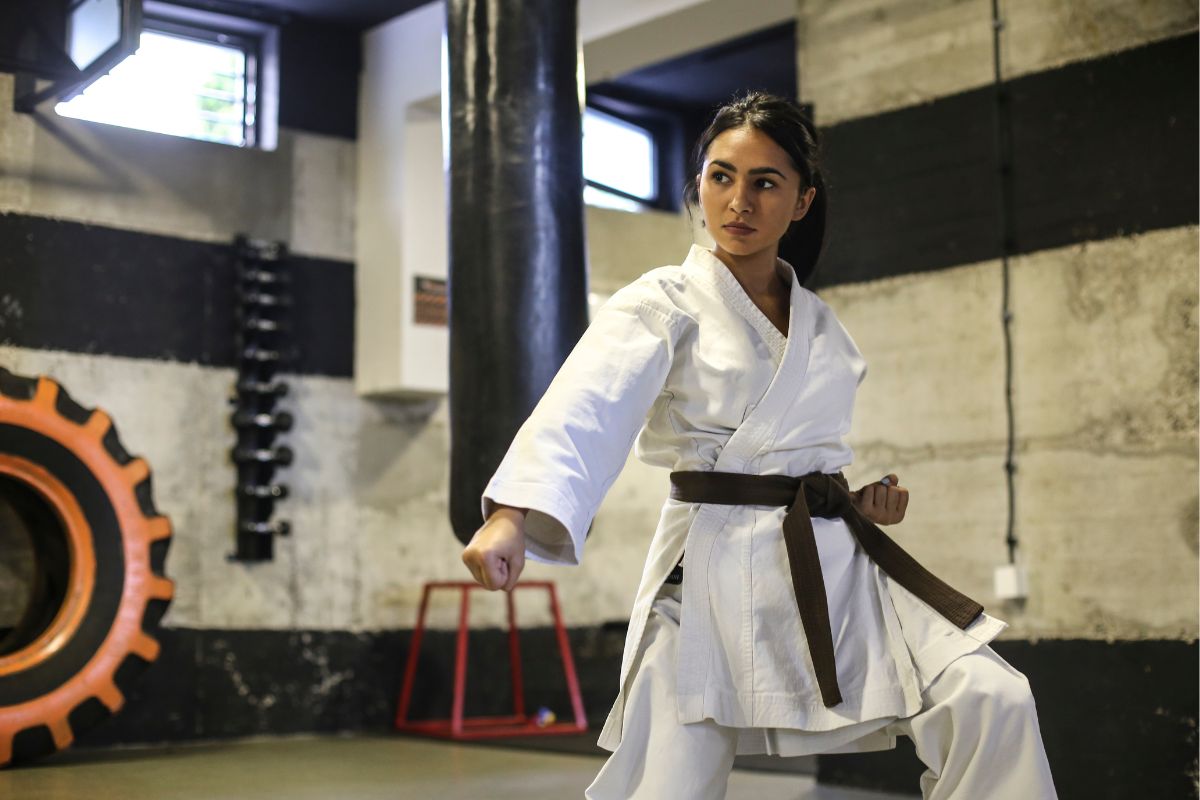
Today, however, karate has become much more than just a sport.
There are several schools of thought about what exactly karate is, but for the sake of simplicity, we’re going to use the term here to mean any type of martial arts practice that focuses on empty-handed techniques.
History Of Karate
The history of karate begins in Japan during the late 1800s when a man named Jigoro Kano began studying Chinese Kung Fu. He found that some of the moves were similar to those used in judo, and decided to combine them into one style.
After years of training under his teacher, he created a set of rules called Kodokan Judo, which eventually became the basis for modern-day karate.
Styles Of Karate
Today, there are over 200 different styles of karate, and these range from traditional forms such as Shotokan and Goju Ryu to Shorinji Kempo, Kyushu Karate, Wado-Ryu, and others.
However, despite all of this variety, there are three main categories of karate that have been popular throughout the world. They are:
- Okinawan Karate
- Shotokan Karate
- Traditional/Hard Style Karate
Okinawa Karate
Okinawans are native to Okinawa Island, and they have been practicing karate since before World War II.
Their focus is on striking and kicking techniques, and they tend to emphasize speed and power over technique. As a result, they often compete against styles like Brazilian Jiu-Jitsu and Muay Thai.
Shotokan Karate
Shotokan is based on the teachings of Gichin Funakoshi, who lived in Japan from 1868 until 1953. His goal was to create a system that would allow people to defend themselves using only their own body weight.
This meant that the emphasis was placed on kicks and strikes rather than grappling or ground fighting.
Because of this, Shotokan karate tends to be very fast-paced and emphasizes powerful punches and kicks. It also includes throws and takedowns, although these are not emphasized as heavily as in other styles.
Traditional/Hard Style Karate (Also Known As “Hard Style”)
Traditional/Hard Style Karate is a hybrid between karate and jujutsu. Its roots can be traced back to the samurai era, where it was used by warriors to train for battle.
Hard style karate uses a lot of throwing techniques, including joint locks, chokes, and leg sweeps. In addition, it incorporates many aspects of jujutsu, including joint manipulation, weapon attacks, and even unarmed combat.
Karate Techniques
There are two basic types of karate techniques: offensive and defensive. Offensive techniques include strikes, kicks, blocks, and throws. Defensive techniques include blocks, parries, and evasions.
Both kinds of techniques can be applied either standing up or while on the ground.
Offensive Techniques
Offensive techniques fall into four general categories:
- Strikes – These are techniques that involve punching or kicking an opponent. Examples
include straight punches, cross punches, roundhouse kicks, low kicks, and high kicks. - Blocks – These are techniques that protect your head or body from incoming blows. Some examples include front and side blocks, rear hand blocks, and elbow blocks.
- Throws – These are techniques that use your bodyweight to throw an opponent off balance. Examples include shoulder throws, hip throws, and arm bars.
- Takedowns – These are techniques that attempt to take down an opponent. Examples include leg sweeps, ankle locks, and wrist locks.
Defensive Techniques
Defensive techniques fall into five general categories:
- Parries – These are techniques that deflect an attack away from you. Examples include forearm defenses, elbow guards, and knee guards.
- Evasion – These are techniques that avoid being hit altogether. Examples include dodging, slipping, jumping, rolling, and falling.
- Defenses – These are techniques that help you resist an attacker’s attempts to grab you. Examples include leg grabs, arm grabs, and chokeholds.
- Counterattacks – These are techniques that counter an attack made by an opponent. Examples include foot stomps, knife attacks, and gun attacks.
- Escapes – These are techniques that get you out of danger. Examples include running away, escaping through windows, and climbing over walls.
Kata
The word kata means “pattern” in Japanese. Kata are sequences of movements designed to teach students how to perform certain techniques correctly.
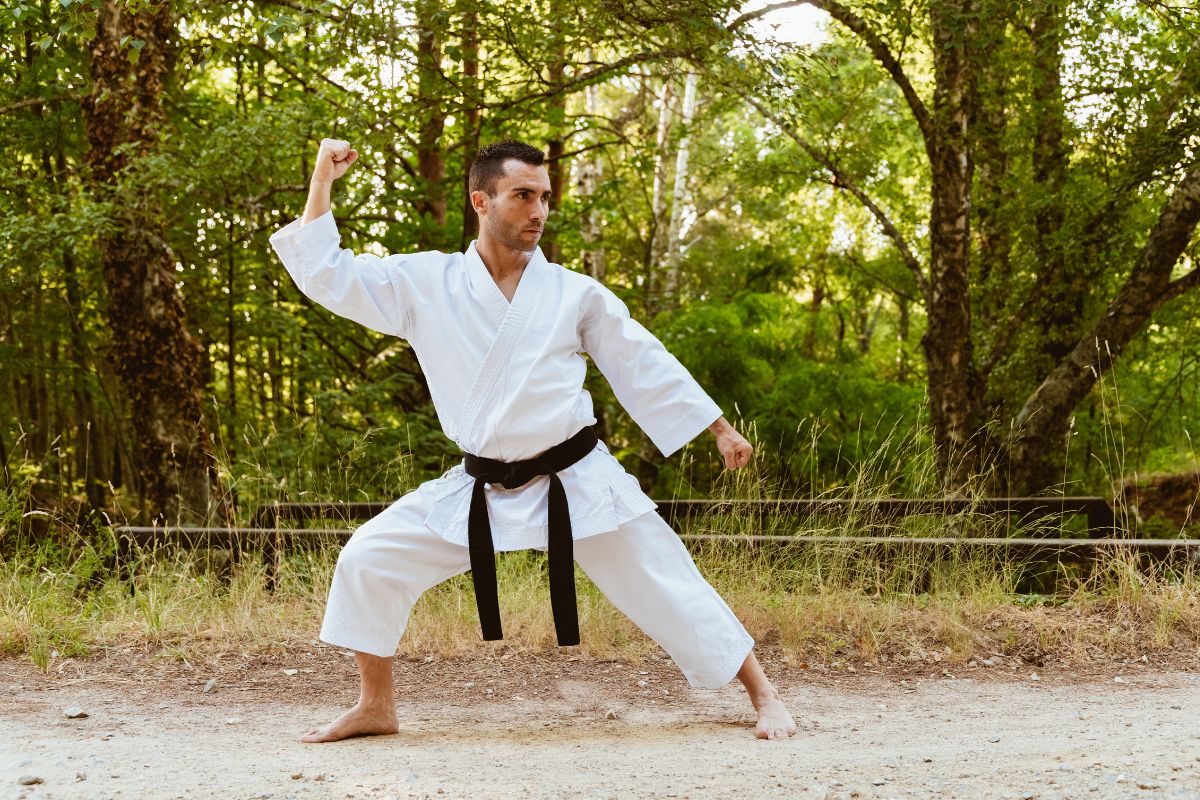
There are hundreds of different katas available today, but most schools have at least one standard set of katas they follow.
All katas contain both offensive and defensive techniques.
The three main purposes of kata training are:
- To learn the correct technique.
- To develop speed and power.
- To improve coordination.
Each kata consists of a series of movements called Kihon Waza (literally, “basic moves”). The purpose of these basic moves is to teach students how to move their bodies properly.
Once students master these basic moves, they will then be able to apply them to more advanced techniques.
For example, if a student learns how to punch correctly before learning how to kick, he may not know which way to strike when he tries to kick someone.
However, once he masters the basics of punching, he will be able to apply his knowledge of proper punching form to any type of kick.
Karate Versus BJJ
As with all martial arts, there are ongoing debates arguing the differences between karate and BJJ, with fans on both sides declaring their preferred sport the best.
There are a number of similarities between karate and BJJ, and these include:
Both Sports Emphasize Self-Defense
Both karate and BJJ have a real focus on self-defense techniques, rather than violence.
In fact, many people believe that the only reason karate was developed in Japan was because it was seen as a suitable weapon for self-defense, and BJJ has a history rooted in the same principles.
Both Sports Require A Lot Of Physical Fitness
In order to compete in either sport, you must train regularly in order to maintain very high levels of physical fitness.
This includes classes and work inside the ring, as well as a workout regime outside of the gym – this should include cardio exercises such as jogging or swimming, as well as weight lifting, plyometrics, and flexibility training.
Both Sports Involve Sparring
Sparring is a regular part of both karate and BJJ training. It’s done for two reasons: firstly, to test your skills against another person; secondly, to practice defending yourself from other attackers.
BJJ Grading System
As with many other martial arts, BJJ has a belt grading system to allow fighters to measure progress. Students progress through the belts by passing tests and winning competitions.
Each color in the ranking refers to a different level, and the colors are White, Blue, Purple, Brown, and Black.
White Belt
A white belt is the lowest rank in Brazilian Jiu-Jitsu. They’re usually beginners who haven’t yet learned enough about the art to pass the tests required for higher ranks.
Blue Belt
A blue belt is a second-highest rank in Brazilian Jiu-Jitsu. A blue belt can demonstrate some skill in grappling but still needs to work on improving their strength and conditioning.
Purple Belt
A purple belt is the third-highest rank in Brazilian JiuJitsu. These are generally strong grapplers who have good technique, but lack in overall strength.
Brown Belt
A brown belt is the fourth highest rank in Brazilian Jiu-jitsu. Brown belts are generally strong grapplers with excellent conditioning.
Black Belt
A black belt is the fifth-highest rank in Brazilian Jiu-Jitsu. Black belts are extremely skilled grapplers who are also often highly trained in the use of weapons.
Karate Belt Gradings
Like BJJ, karate has a belt grading system, and the rankings are similar to those used in BJJ. There are around eight levels in total: white, yellow, orange, green, purple, blue, brown, and black.
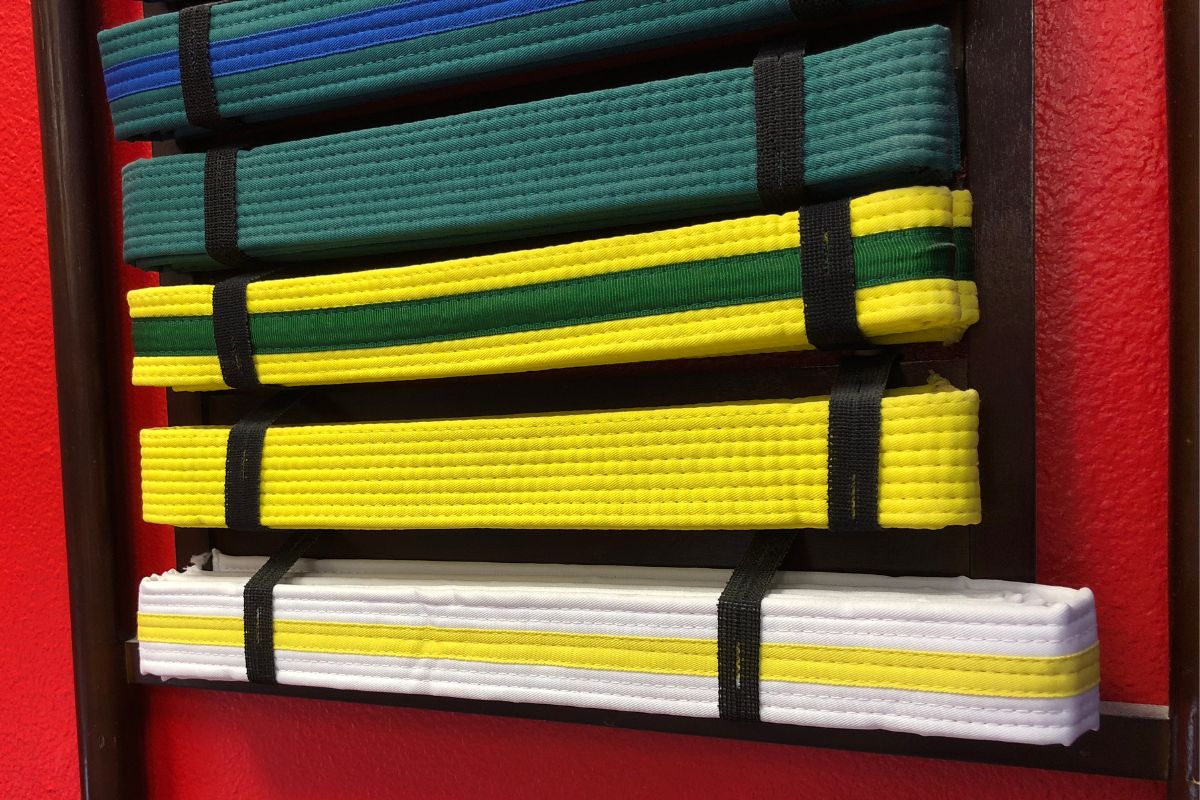
White Belt
The white belt is the lowest level in karate. At this stage, students are learning how to perform basic movements, such as punches and kicks.
Yellow Belt
The yellow belt is the next highest level in karate. Students at this point are able to perform most of the basics but need to improve their speed and power.
Orange Belt
An orange belt is the next highest rank in karate. Orange belts are capable of performing most of the basics quickly, but they still need to learn more advanced moves.
Green Belt
A green belt is the next highest ranking in karate. Green belts are capable of executing most of the techniques quickly, but there are still some aspects that need to be improved upon.
Purple Belt
A purple belt is considered the highest rank in karate, and it takes years of hard work to achieve. At this level, students are capable of executing all of the techniques, but they need to become even stronger and faster.
Blue Belt
A blue belt is the next highest ranked in karate. The student is now capable of executing most of these techniques, but he or she still needs to develop his or her own style.
Brown Belt
At this level, a student is capable of executing most of karate’s techniques. However, the student must continue to perfect his or her skills.
Black Belt
At this level, a student becomes an expert in karate and is able to carry out the skills, moves and techniques with grace and ease. At this point, students may also start teaching others.
Dans
Following the acquisition of a black belt, students move to dans or degrees.
Dans are awarded based on time spent training and mastery of certain techniques and start with 1st dan before moving up the ranks.
Differences Between Karate And BJJ
The most significant difference between BJJ and karate is the moves that are involved, as well as the techniques learned.
In BJJ, you will learn many different types of throws, chokes, locks, sweeps, submissions, etc., while in karate, you will mostly learn strikes, blocks, parries, and defenses.
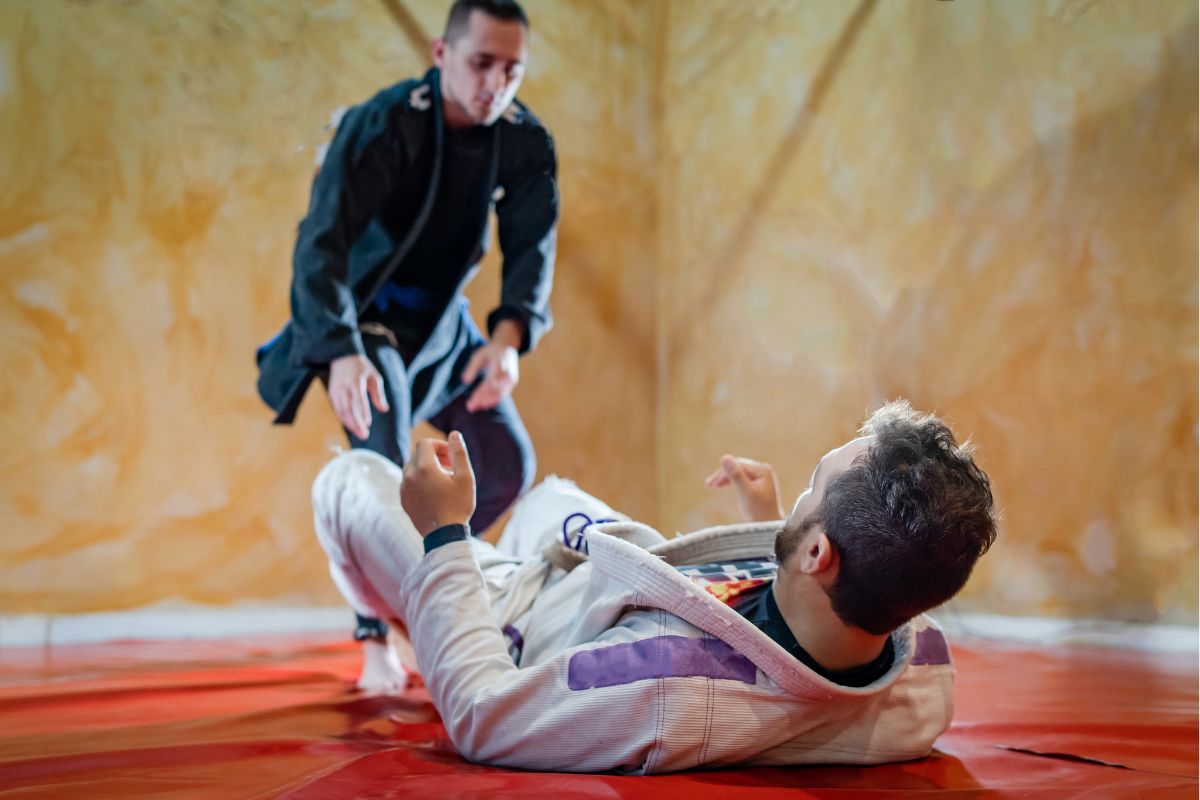
Another major difference is that BJJ focuses on self-defense, whereas karate focuses on competition.
Another important difference is the fact that BJJ is a grappling sport, while karate is not. This means that BJJ practitioners have to know how to grapple with opponents, while karate practitioners do not.
Both skill sets are valuable but different, so it is a good idea to choose based on your skills and strengths, as well as your preferences.
Should I Choose BJJ Or Karate?
Choosing between BJJ and karate is a personal choice, and will ultimately depend on your personal preferences, fighting style, and aspirations.
If you are interested in both styles, then it is possible to make the most of both types of sports; it is possible to combine them by using BJJ to improve your karate game and using karate to help you get better at BJJ.
Ultimately, the skills and fitness required for both sports will be beneficial in the long term, and so if you enjoy both sports, then why not try combining them?
What Are The Benefits of Martial Arts?
Whether you choose karate or BJJ, all martial arts offer a wide range of benefits, including physical, mental, and emotional health.
Here are some of the main ones:
Physical Health
Martial arts practice helps build strength, flexibility, and balance, which leads to improved overall health. It also improves cardiovascular and respiratory function and increases bone density, muscle tone, and coordination.
Mental Health
Martial arts practice teaches discipline, focus, and concentration, which helps keep people calm and relaxed during stressful situations.
It also promotes confidence and positive thinking and helps develop patience, perseverance, and determination.
Emotional Health
Practicing martial arts provides opportunities for social interaction, and helps boost self-esteem and confidence. It also encourages empathy, compassion, and forgiveness, and builds friendships.
Final Thoughts
Both BJJ and karate are great martial arts, and each has its benefits. They can complement one another, and allow you to gain new skills and knowledge, as well as the ability to defend yourself against a number of potentially risky situations.


